The Philopappos Hill is the highest of the three hills, just west of the Acropolis. It is named after a monument erected at the top of the hill in honor of the Roman senator Philopappos.
Hill of the Muses
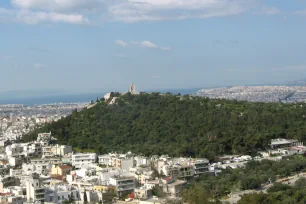
In antiquity, the Philopappos Hill was known as the Mouseion (Hill of the Muses). The Greek believed that the hill was inhabited by the nine muses and that Musaeus, a poet and disciple of Orpheus, was buried here.
The hill has a height of 147 meters (482 ft) and offers spectacular views of the Acropolis. Towards the south, you can see as far as the sea.
The other two hills are known as the Hill of the Nymphs – formerly the site of a shrine dedicated to the nymphs – and the Hill of the Pnyx, where people assembled in the sixth century BC. Together the three hills now form one large park with a network of paths that lead along ancient monuments.
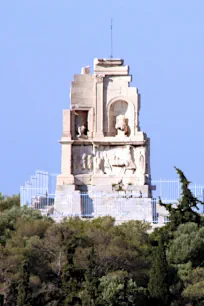
Philopappos Monument
The Roman consul and senator Gaius Julius Antiochus Epiphanes Philopappos, a powerful aristocrat and friend of the Roman Emperor Trajan, admired Greek culture and long lived in Athens. He was seen in Athens as a benefactor, and often sponsored theater plays.
After he died, the Athenians built a marble tomb and monument for the senator. The monument, completed in 119 AD, is twelve meters high and was built at the highest point of the Philopappos Hill. Now a ruin, the niches with statues of Philopappus and his grandfather Antiochus IV are still visible. The frieze below the niches depict Philopappos’s entrance in 109 AD in the city of Athens as Roman consul.
The Pnyx
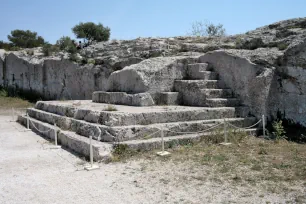
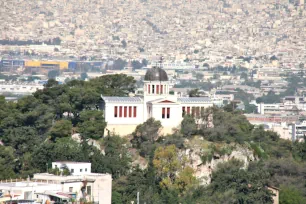
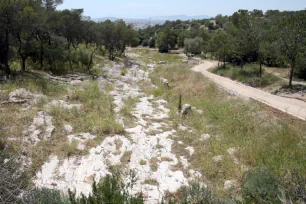
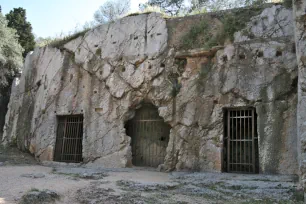
The Pnyx, a hill just north of the Philopappos, is the birthplace of democracy. This was the place where, from 508 BC on (when Athens became a democracy), citizens assembled ten times a year to listen to orators and take political decisions.
From the still visible Bêma – the podium – leaders like Themistocles, Pericles and Demosthenes addressed the crowd, who was seated in a semicircle. Initially the crowd sat on bedrock, but later wooden benches were built. Originally there was seating for 5,000 people, eventually expanded to accommodate a crowd of an estimated 13,500 people. At the end of the fourth century, the Pnyx was abandoned when the assembly moved to the even larger Theater of Dionysus.
Hill of the Nymphs
The 103-meter-high Hill of the Nymphs, northwest of the Philopappos Hill, was in ancient times the site of a shrine dedicated to the nymphs, hence its name.
In 1842 Baron Sinas financed the construction of the first observatory of Athens, the Asteroskopeion. It was built atop the Hill of the Nymphs by the Danish architect Theophil Hansen, who created a neoclassical domed structure with a cross-shaped floorplan.
Koile
The Deme of Koile was an ancient suburb of Athens built in the valley between the Hill of the Muses and the Pnyx. A road, eight to twelve meters wide, ran through Koile and connected the Acropolis with Piraeus and the sea. A five hundred meter long section of the Koile road has been excavated.
The road was protected by the ‘Long Walls’, two walls that created an approximately six hundred meter (2000ft) wide safe corridor that led al the way to the harbor in Piraeus. In ancient times, this was one of the most important roads in Greece, and the street was lined with important structures and monuments.
Other sights
The area around the Philopappus Hill contains many more interesting historic sights, such as the prison of Socrates, the Deme of Melite and the Kimoneia (an ancient tomb), and it can take a good part of the day to discover them all. Fortunately, each sight is indicated with a placard which gives some historical info as well as photos and plans.

